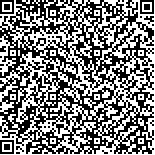Archive > Volume 44 Issue 12 > 2018,44(12):1593-1603. DOI:10.7519/j.issn.10000526.2018.12.009 Prev Next
Application of SpatialTemporal Projection Model for ExtendedRange Forecast During Meiyu Season in Shanghai
- Article
- Figures
- Metrics
- Preview PDF
- Reference
- Related
- Cited by
- Materials
Abstract:
Recently, an extendedrange (10-30 days) forecast method, namely the spatialtemporal projection model (STPM) has been applied in predicting the lowfrequency precipitation in tropics and shows comparable skills. Based on the daily precipitation data from 11 weather stations in Shanghai, and the daily MJO index (RMM1 and RMM2) provided by Australian Meteorological Bureau during 2011-2010, the STPM model for the extendedrange forecast of precipitation during Meiyu season in Shanghai was constructed. Depending on the relationship between the quasiperiod MJO activities and the precipitation, the coupled patterns between temporal varying realtime multivariate MJO (RMM) index and regional lowfrequency precipitation during Meiyu season is derived based on the singular value decomposition (SVD). Therefore, using the MJO index as predictor and projecting it onto the spatialtemporal coupled patterns, the forecast of regional lowfrequency precipitation is obtained. The STPM model is then used in the precipitation prediction during 2011-2016. The evaluation demonstrates that the prediction of the STPM model achieves a useful skill at a lead time of 25 days. Three quarters of precipitation occurrences and intensity during Meiyu season can usually be predicted. Among them, the STPM model attains a higher skill in the prediction of 10-20 d lead time. Generally, the STPM model provides a useful method in the extendedrange forecast during Meiyu season in Shanghai.
Keywords:
Project Supported:
Clc Number:


Mobile website









